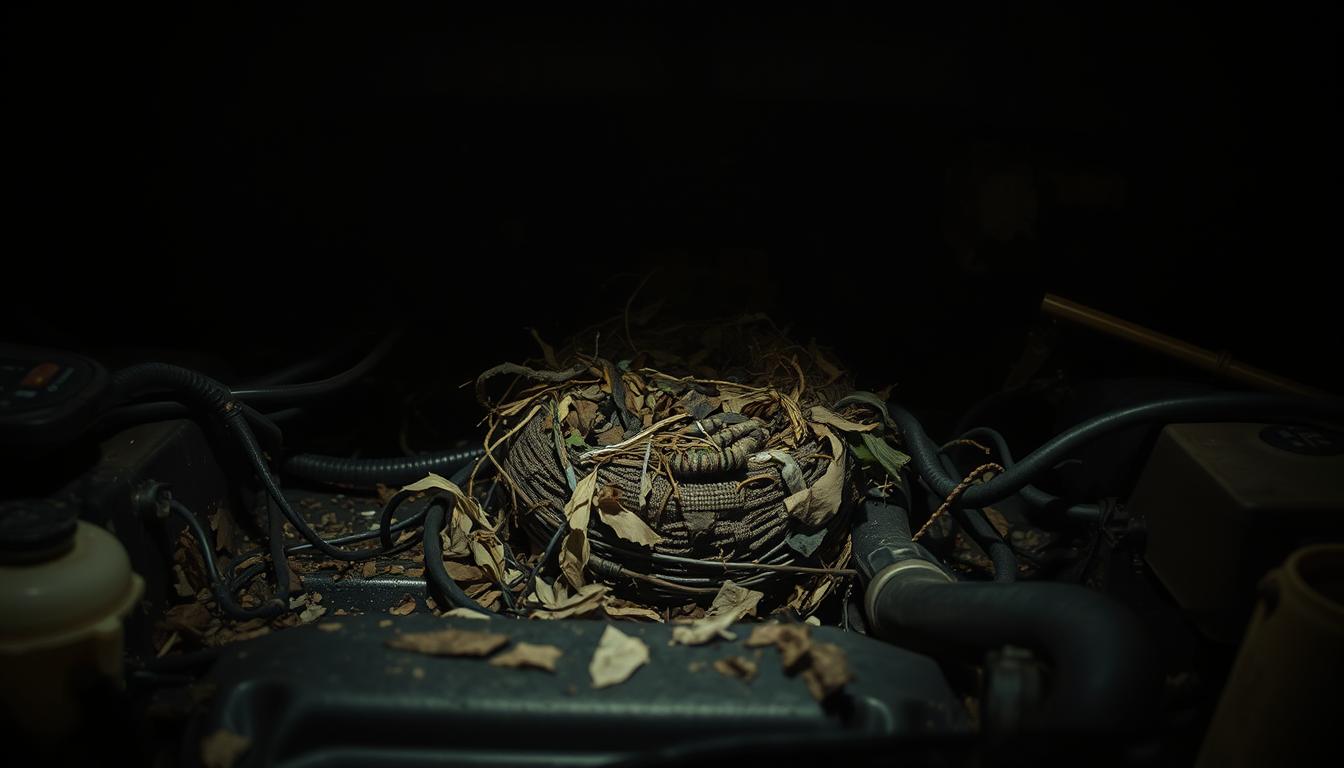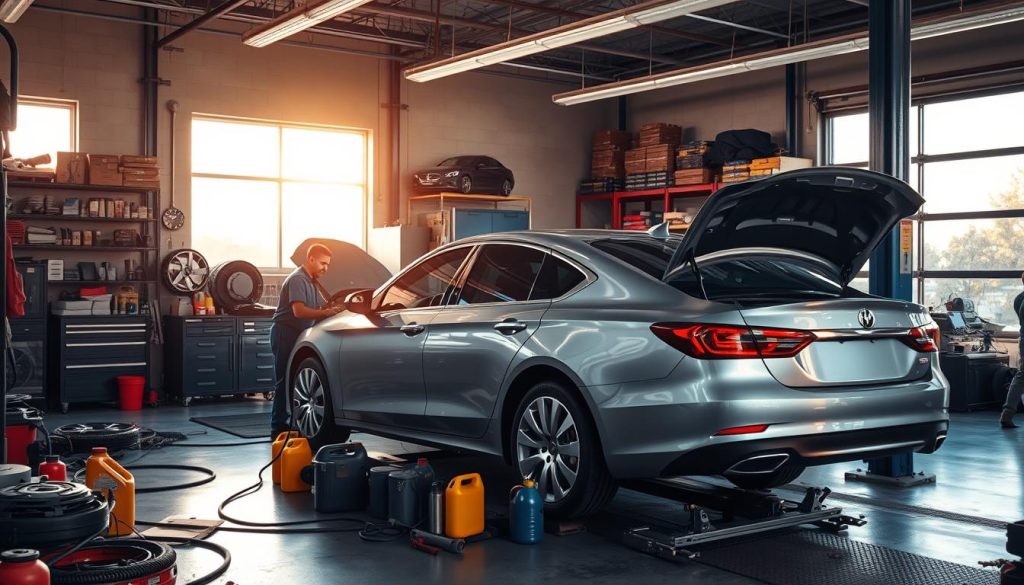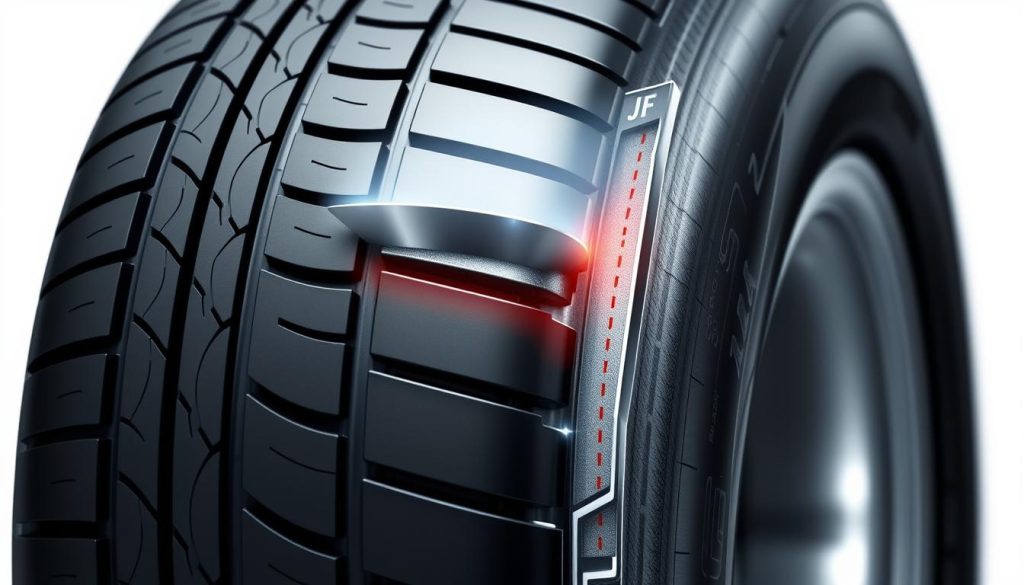Discovering unwelcome guests in your car’s engine compartment is more common than you might think. Recent studies show that small animals often target parked automobiles, especially during periods of extended inactivity like the pandemic. These intruders can leave behind chewed wires, shredded insulation, and nesting materials that threaten your safety and wallet.
John Ibbotson, Consumer Reports’ chief mechanic, warns that “electrical system harm caused by gnawing is a top concern.” Issues range from minor annoyances like clogged filters to critical failures requiring costly repairs. Left unchecked, these problems can escalate into fire risks or sudden breakdowns.
This guide helps you spot early warning signs before they become emergencies. We’ll explain why modern cars attract these pests and which components face the greatest risk. You’ll learn practical prevention strategies and when to contact professionals like Heaven Automotive for expert repairs.
Key Takeaways
- Extended parking periods increase vulnerability to animal intrusions
- Electrical wiring and air filters are most commonly affected
- Ignored issues may lead to safety hazards or $2,000+ repair bills
- Regular inspections help catch problems early
- Professional assessment is crucial for complex damage
Understanding Rodent Damage to Vehicles
Many drivers don’t realize their parked cars often become chew toys for wildlife. Rodent biology plays a key role here – mice and rats must gnaw daily to keep their teeth from overgrowing. Modern vehicles use soy-based coatings on wires, creating an irresistible texture for these animals.
Nature’s Dental Dilemma
Terminix experts confirm these creatures aren’t seeking snacks. Their survival depends on constant chewing. Warm engine compartments offer perfect nesting spots, especially during colder months. This combination turns your car into a “dental maintenance workshop” for pests.
High-Risk Auto Parts
Three components face the greatest threats:
- Wiring harnesses (most common target)
- Power steering fluid lines
- Air intake system tubes
Major automakers like Toyota and Ford have issued repair guides for gnawed wires. A single chewed cable can disable your fuel injectors or brake sensors. Left unrepaired, minor nibbles often grow into $1,500+ electrical system failures.
Understanding these patterns helps prioritize inspections. Focus on areas near the firewall and undercarriage where animals easily access. For complex cases, our team at Heaven Automotive uses specialized tools to trace hidden wire damage.
Identifying Warning Signs Under Your Hood
Your car’s engine compartment might be hiding more than just mechanical parts – unwanted visitors could leave destructive evidence. We’ll show you how to conduct a thorough inspection using simple visual checks anyone can perform.
Visual Clues: Chewed Wiring and Droppings
Start by examining wires near the battery and air filter. Look for:
- Exposed copper strands (often appear shiny)
- Plastic insulation with jagged bite marks
- Black rice-shaped pellets (mouse droppings)
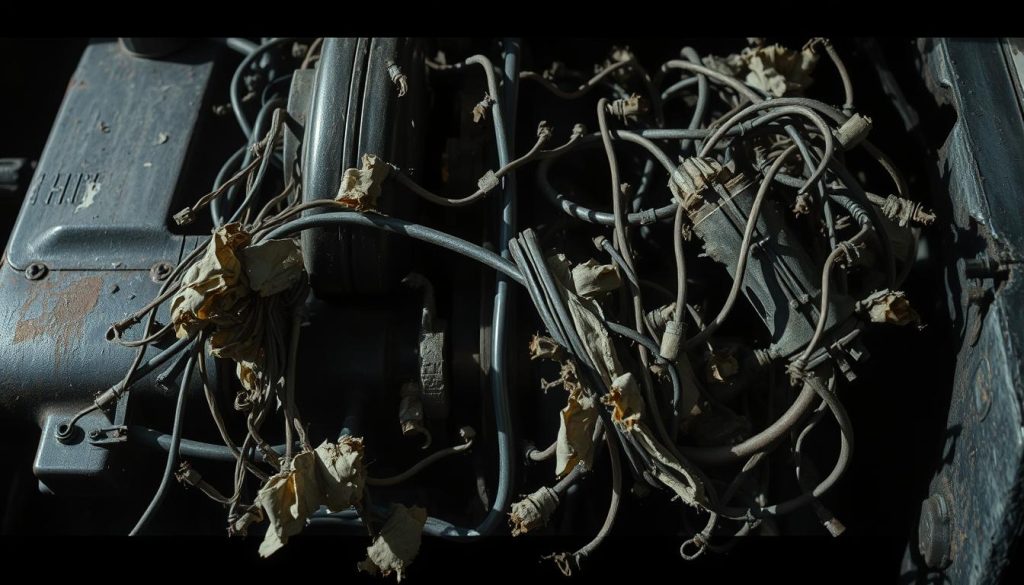
Droppings near the engine block suggest recent activity. Larger, capsule-shaped waste typically means rats, while smaller pieces indicate mice. Wipe surfaces with a flashlight – urine stains glow under UV light.
Spotting Nesting Materials and Other Indicators
Check crevices around the air intake and firewall. Common nesting materials include:
- Shredded paper or fabric scraps
- Compressed leaves or grass clippings
- Foam insulation pieces
Rubber hoses with parallel scratches often signal gnawing attempts. If you find acorns in the air filter or hear rustling sounds when starting the car, contact professionals immediately. Our team at Heaven Automotive uses thermal imaging to locate hidden wire damage most owners miss.
Preventative Measures to Keep Your Car Rodent-Free
Vehicle owners can take proactive steps to prevent unwanted animal visitors under the hood. A combination of environmental adjustments and targeted deterrents creates the best defense against costly repairs. Let’s explore practical methods to safeguard your automobile.
Securing Your Garage and Parking Area
Start by transforming storage spaces into unwelcoming zones for pests. Remove food wrappers, birdseed, and pet food from your garage. Use sealed plastic bins instead of cardboard boxes for storage.
- Install motion-activated lights in parking areas
- Seal gaps around garage doors with weather stripping
- Move seldom-used cars weekly to disrupt nesting patterns
Parked cars attract mice and rats when stationary for over 72 hours. For seasonal vehicles, consider using breathable car covers treated with natural repellents.
Effective Rodent Deterrents and Repellents
Natural solutions offer temporary protection without harsh chemicals. Soak cotton balls in peppermint oil and place them near tires or engine bays. Refresh these every 10-14 days for consistent results.
- Spray clove-cayenne pepper mixtures on wiring harnesses
- Spread cedar shavings around parking surfaces
- Use ultrasonic devices near wheel wells
For persistent infestations, professional pest control services provide stronger solutions. Our team at Heaven Automotive combines mechanical barriers with eco-friendly treatments when DIY methods fall short. Remember – prevention works best when multiple strategies work together.
Step-by-Step Cleaning and Repair Process
When tackling engine compartment cleanup, safety and methodical action prevent health risks and further harm. Follow these protocols to address contamination while protecting yourself and your car parts.
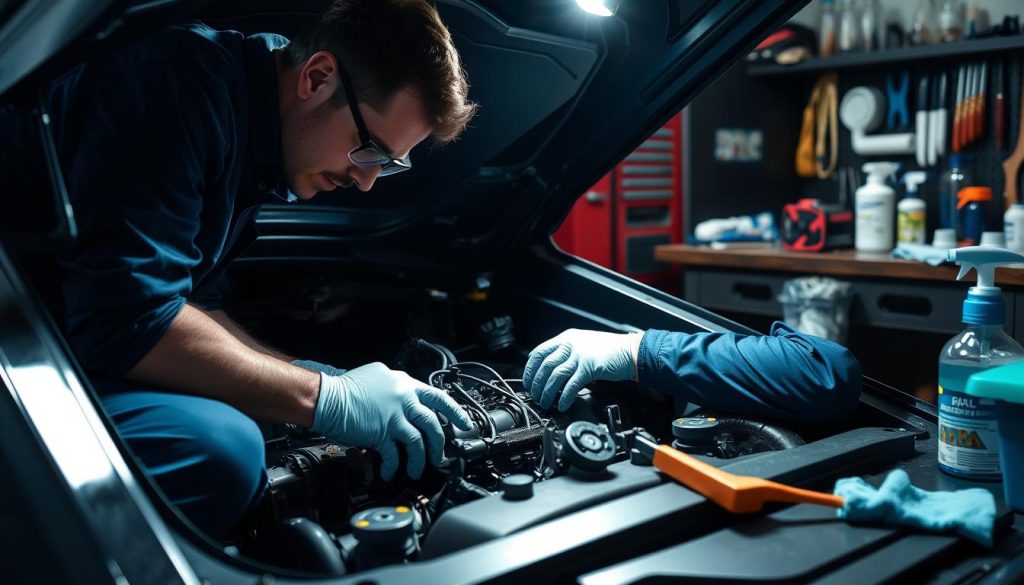
Safety Guidelines During Inspection and Cleaning
Always park in open spaces with good airflow before opening the hood. Let the engine cool for 20 minutes to reduce fume exposure. The CDC advises against vacuuming nests or droppings immediately – this spreads dangerous particles.
- Wear thick rubber gloves and N95 masks
- Disconnect battery terminals first
- Use EPA-approved disinfectant sprays
Remove nesting materials with tongs, placing them in sealed bags. Wipe surfaces with disinfectant-soaked cloths, focusing on wiring and air intake areas. Allow components to dry completely before reconnecting power.
DIY Solutions Versus Professional Repair
Minor wire coating scratches can often be fixed with high-quality electrical tape. Wrap damaged sections tightly, checking for exposed metal. Test lights and sensors afterward to confirm functionality.
Seek professional help if you find:
- Multiple chewed wires in critical systems
- Gnawed fluid lines or air filter housing
- Persistent urine odors after cleaning
Our Heaven Automotive technicians use diagnostic scanners to locate hidden faults in modern vehicles. Complex wiring repairs often require specialized tools and manufacturer-grade replacement parts. Don’t risk electrical fires – when in doubt, schedule a professional assessment.
Pro Tips from Automotive Experts
Professional-grade solutions offer lasting protection against engine compartment invaders. We recommend combining physical barriers with scheduled maintenance for maximum effectiveness. Honda’s rodent-deterrent tape (part No. 4019-2317) provides a prime example – this $42 capsaicin-treated wrap deters chewing through natural irritation.
Utilizing Rodent-Deterrent Tape and Mesh
Install protective materials using these proven techniques:
- Wrap wiring harnesses tightly with 2-3 tape layers
- Secure metal mesh around rubber hoses using zip ties
- Overlap barrier edges by 1 inch to prevent gaps
Consumer Reports testing shows this approach reduces nesting attempts by 78%. For stored vehicles, place mothballs in breathable fabric pouches near air intakes – never directly on engine components.
Maintaining Regular Inspections and Repairs
Create a monthly checklist for critical areas:
- Examine tape integrity under hood lighting
- Check mesh barriers for corrosion or displacement
- Document findings in maintenance logs
Our Heaven Automotive technicians find most owners miss chewed sensor wires behind engine mounts. When traps become necessary, use enclosed bait stations placed 3 feet from tires – this keeps pets safe while controlling pest populations.
Persistent issues require professional analysis. We identify patterns like repeated attacks on fuel line insulation or ECU wiring. Schedule seasonal inspections if parking near fields or wooded areas to keep car systems protected year-round.
Additional Maintenance and Long-Term Care
Protecting your vehicle’s electrical systems requires consistent attention and tailored solutions. At Heaven Automotive, we help drivers implement advanced monitoring practices that integrate seamlessly with routine maintenance schedules.
Monitoring Electrical Components and Wiring
Schedule monthly checks of critical systems like spark plug wires and ECU connections. Use UV flashlights to spot tiny chew marks on insulation. For minor issues, high-temperature electrical tape provides temporary protection until professional repairs.
We prioritize these components during inspections:
- Oxygen sensor cables near catalytic converters
- Wiring harnesses behind dashboard panels
- Battery terminal covers
Strategies to Protect Your Car in High-Rodent Areas
Rural drivers face unique challenges. Install steel mesh barriers around parking spots and trim vegetation near garages. Our technicians recommend quarterly undercarriage steam cleaning to remove scent trails that attract pests.
For severe infestations, combine these methods:
- Ultrasonic repellents with variable frequency patterns
- Non-toxic deterrent sprays reapplied every rainfall
- Professional-grade sealing of engine bay gaps
Keep your car protected year-round with our customized maintenance plans. We track wear patterns in high-risk zones and replace vulnerable materials before problems arise. Contact Heaven Automotive for specialized assessments in challenging environments.

